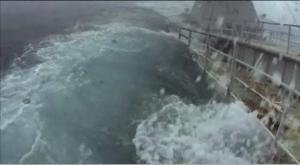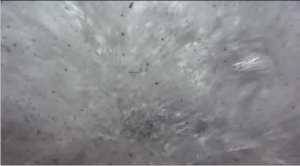Shooting a 3D documentary: testing the green screen
Green screen action!
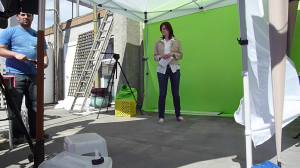
Writer Nicole Tomlinson stands in for a 3D green screen test
We’ve taken the Film Factory 3D BS Indie Rig Sony EX1/EX3 B cam setup for a full test run.
The mission: to see if the system can capture green screen footage for our first 3D documentary the way we want it to.
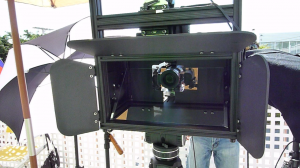
Stereographer Sean White mans the 3D beam splitter rig
We need these shots to create several of out our in-house visual effects, a style we prefer to classic documentary CGI because it allows us to explain extremely technical concepts in a photo-real atmosphere.
This means our transitions in and out of our footage are much more seamless … viewers can stay more immersed in the environment and focused on the story.
Here’s an example of our Blowdown VFX style:
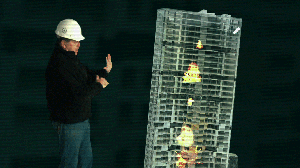
Controlled Demolition Inc. President Mark Loizeaux outlines his demolition plan
The green screen footage we’ll need to include effects like this comes with an entirely different set of issues than the field shots we’ll have to tackle.
This environment is the most “studio” our event-based filming gets – the interviews aren’t scripted, but the lighting is set, the frame is stationary, and there’s opportunity for multiple takes.
But what we capture has to work in our compositor’s virtual environment or it’s completely useless.
Jakub Kuczynski, Parallax Film’s VFX artist, details these challenges:
We’ve thrown the footage over to post – we’ll see if it flies.

